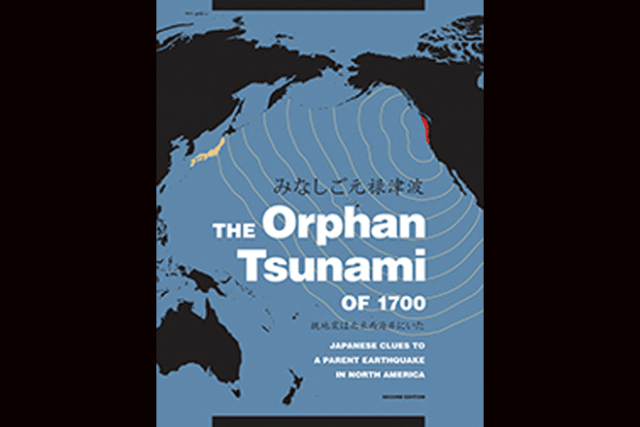By David Yamaguchi For The North American Post
IN EARLY DECEMBER, University of Washington Press listed the second edition of “The Orphan Tsunami of 1700” among the newly printed books that had arrived at its warehouse and were available for sale. As a co-author of this bilingual U.S.-Japan collaborative project outlining North American and Japanese evidence for a Tohoku-like earthquake in the Pacific Northwest, I found the announcement pleasing. It proves that the endeavor that consumed two years of my nights and weekends was worthwhile. Sufficient numbers of readers, most presumably Americans, continue to find Orphan an intriguing enough story to purchase, at a rate steady enough to convince Press business managers that it remains worth supporting.
Yet in these days of mobile Internet media, one might wonder why a tenyear old book printed on wood pulp still matters. The short answer is that Orphan remains the go-to standard reference for earthquake and tsunami hazards-preparation in the Northwest. It summarizes how we know what we do about these risks. While details of the story have been refined over the past decade by a new generation of scientists, the broad strokes of a future major coastsubsiding temblor unleashing deadly tsunami waves were known by 2005. Moreover, we chose to present the story as a series of image-rich layouts, like those in coffee-table books. Such content is best experienced in large format, instead of on 2×3 inch electronic screens.
More personally, I have enjoyed how Orphan is a bi-cultural story. In the early 1990s, North American geologists had been unable to resolve the puzzle of how large an earthquake could strike the Northwest: magnitude 8 or 9. The gamechanger was the discovery by Japanese tsunami researchers that our waves had crossed the Pacific, and had been remarked on in the official records of six coastal villages spanning over 600 miles of Honshu coastline from Tohoku to Wakayama.
To make those hieroglyphic brushstroked documents intelligible to Americans, we guide the reader through the pre-industrial Japanese past. Beginning with the ancient origins of the kanji and kana scripts used by scribes, we continue with Japanese traditional units of timekeeping, with the making of the remarkably durable paper (washi) on which the entries were made, and with the spread of literacy to the populace. We conclude with the implications of the records for the Northwest today.
In short, Orphan is the kind of U.S./ Japan project that shows what is possible when small teams from two countries join efforts, and write with their hearts for the benefit of future generations.




